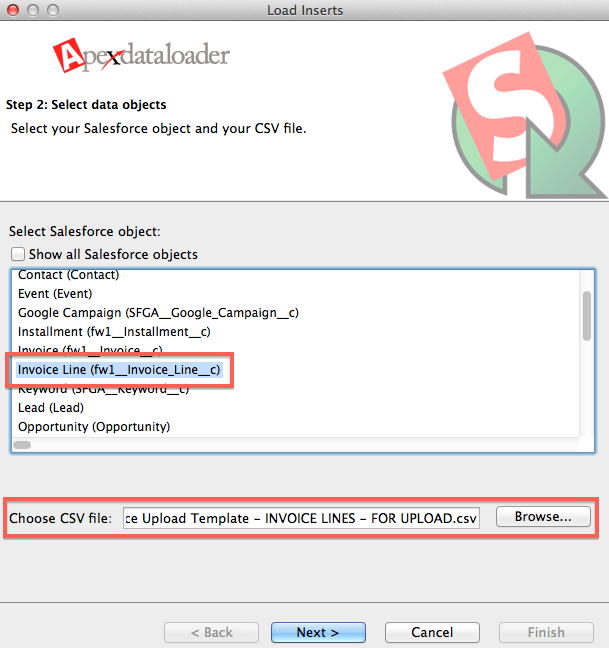Migration
Migrating Invoices from an External System to Payment Center
Last updated on 25 Nov, 2025
For users coming from other systems, you can migrate your existing invoices into Payment Center. We have created a template where you can enter your existing invoice data. This template, when used in conjunction with Data Loader, will map your data to the appropriate fields in Payment Center.
What You Need
Excel or Google Spreadsheet – you need this to enter your invoice data
Our pre-defined template – you can get it here: Invoice Upload Template
Data Loader (and knowledge thereof) – you need this to upload your data into Payment Center. More info here: http://wiki.developerforce.com/page/Data_Loader
Steps
Export your invoice data from your existing system. You will use this data to populate the template, which you will later on upload into Payment Center.
Salesforce Accounts are required when creating invoices. This means that your accounts should have been created in Salesforce. You then need to associate your accounts with your invoice data. To do that, export your accounts into a CSV file using Data Loader. You will only need the ID and the name of the account:

Open the template and populate the Accounts worksheet with the exported accounts. Note that the Name has to be the first column:

If you use Contacts, you may also want to associate those with your invoices. Using Data Loader, export your contacts into a CSV file. You will only need to export the ID, Name and AccountID:

Populate the Contacts worksheet with the exported contacts. Note that the Name should be the first column, ID the second and AccountID the third:

Go to the INVOICES – FOR UPLOAD worksheet and enter your data.
Use the Alternate Invoice Number column to enter your invoice number from the external system.
Enter the account name. The ID should be automatically pulled from the Accounts worksheet. If nothing is pulled, then it means it did not find the account:
Enter the contact name. Just like the account, the ID should be automatically pulled from the Contacts worksheet. You should enter a contact that is associated with the account. The IS CONTACT VALID? column will tell you if the contact is associated with the account:
Populate the remaining columns.


The data above is the header portion of the invoice. You need to upload these first before you can upload the line items. To do the upload, export/save INVOICES – FOR UPLOAD worksheet to a CSV file, then use Data Loader to upload the data into Payment Center, as shown by the succeeding screenshots:
Choose Insert:
Select Invoice and enter the CSV file:
Click Create or Edit a Map:
Click Auto-Match Fields to Columns:
Follow onscreen instructions until the upload is finished.




After a successful upload, you will notice that your invoices do not have line items. You will now need to enter the line items in the template and upload them separately. But before you can do that, you need to somehow associate the line items to the appropriate invoice. To do that you need the invoice IDs. Using Data Loader, export the invoices you just uploaded. You only need the ID and the Alternate Invoice Number, as shown below:

Using the exported invoices, populate the Invoices worksheet, with Alternate Invoice Number as the first column:

Go to the INVOICE LINES – FOR UPLOAD worksheet and enter your line items.
Enter the Alternate Invoice Number. The invoice ID should be automatically pulled up from the Invoices worksheet:
Populate the remaining columns.

Export/save INVOICE LINES – FOR UPLOAD to a CSV file, then use Data Loader to upload the line items. The upload process is the same as the invoice upload, except that the target Salesforce object is Invoice Line, as shown below:

As with the invoice upload, click Create or Edit a Map and Click Auto-Match Fields to Columns to map the appropriate fields. Follow onscreen instructions until the upload is finished.
At this point, your invoices are now uploaded into Payment Center. To learn more about invoices, please follow this link: Creating An Invoice

